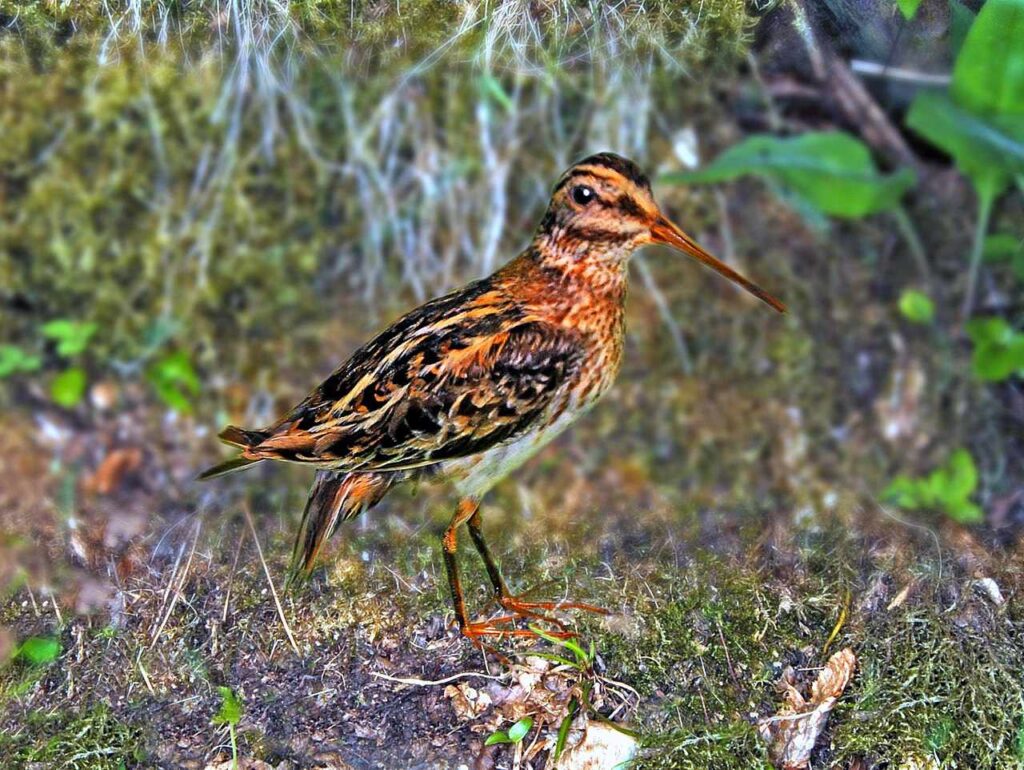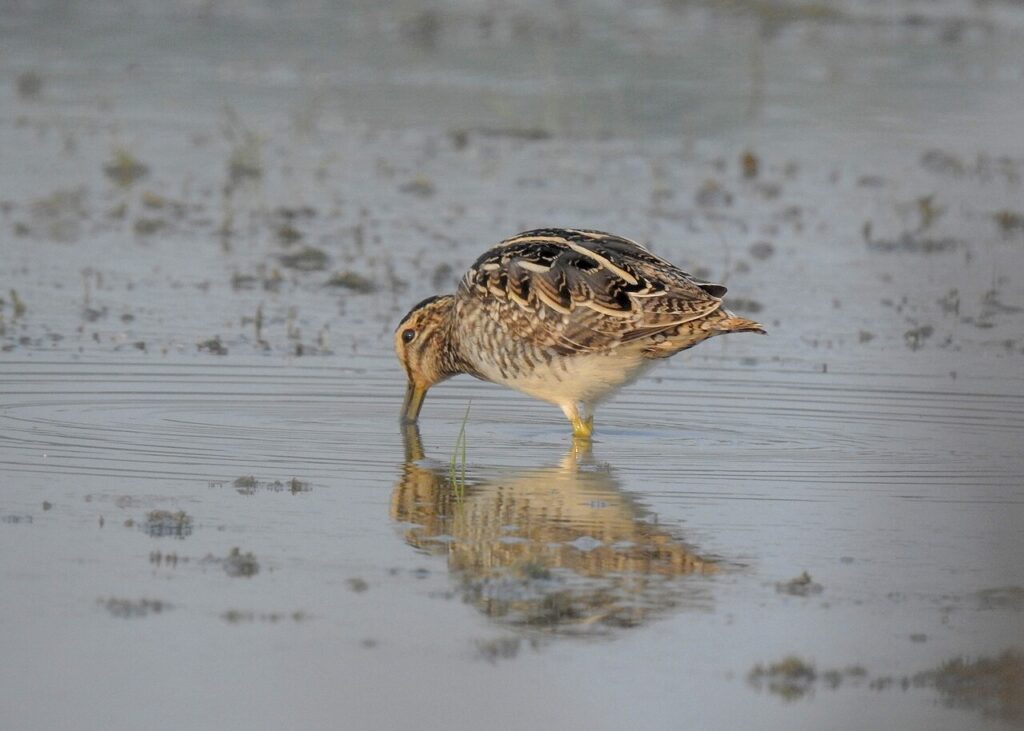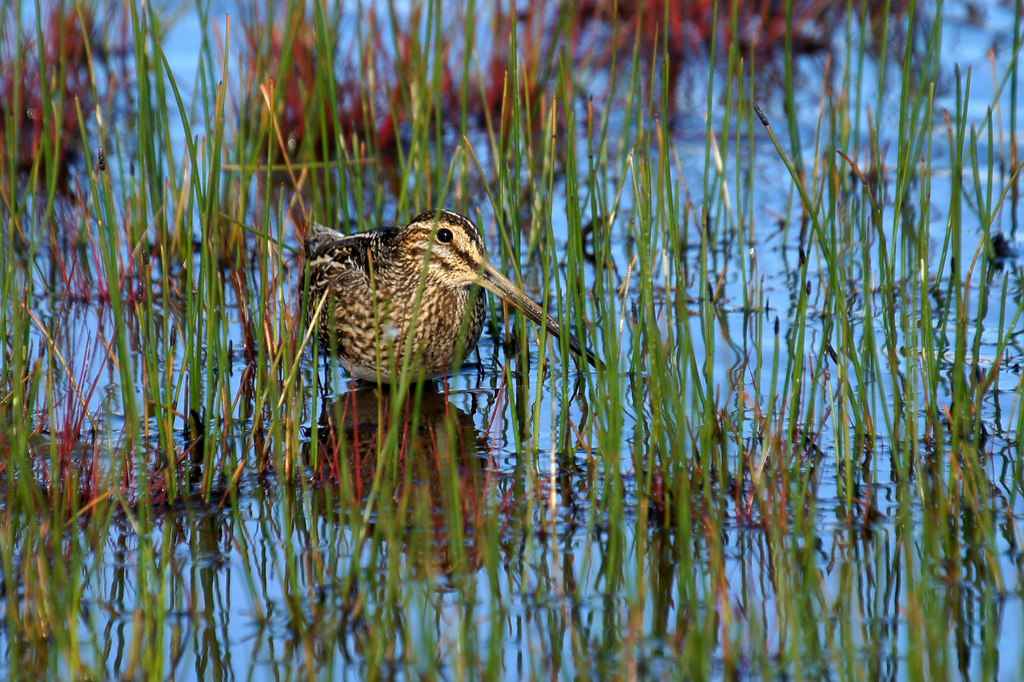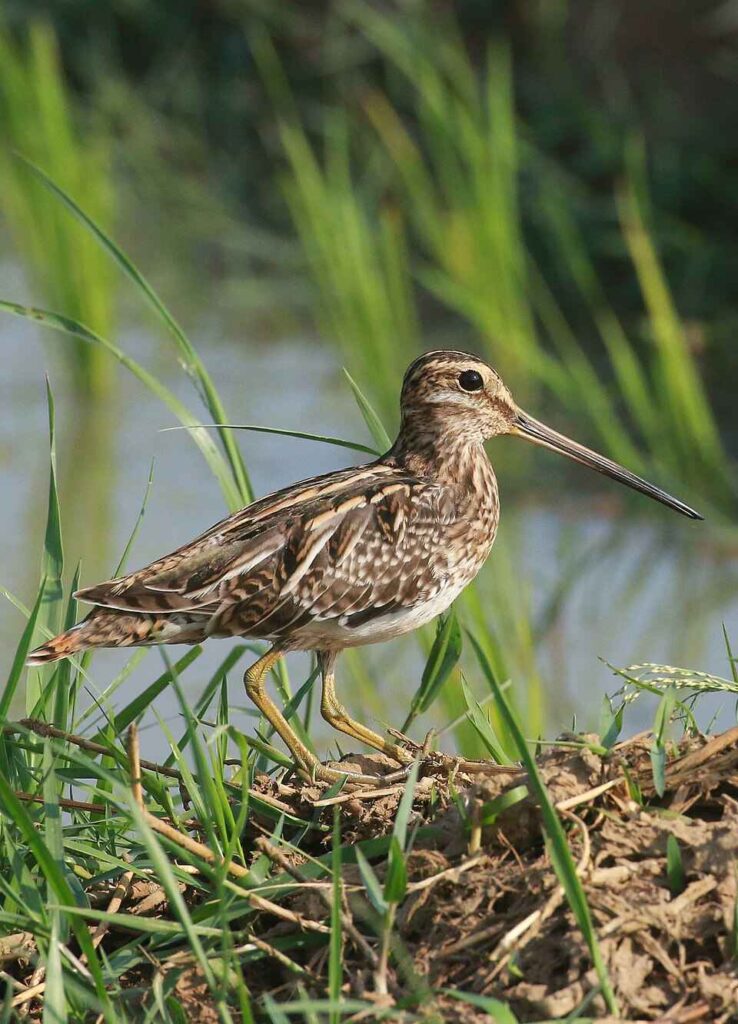Snipe at Fairfield
Introduction
Snipe and Jack Snipe are two of the most important birds to visit and stay at Fairfield Nature Reserve during the winter months.
Wading birds
The Snipe, Gallinago gallinago, is a distinctive, medium-sized wading bird that requires a wetland habitat, as it probes in the ground with its long bill to feed. It is also often referred to as a “Common Snipe”.
The Jack Snipe, Lymnocryptes minimus, its close relative, is similar but smaller and has a shorter bill.
Steep decline
There has been a steep decline in the numbers of Snipe over the last 25 years, particularly in lowland wet grassland, and the species is currently classified on the Amber list in the UK. (PDF)
Jack Snipe, although less common, are not considered at risk of decline and are on the green list.
An ideal habitat
To help counter the Snipe’s decline, we maintain certain areas of the Reserve to provide a habitat for both Snipe and Jack Snipe in the winter.
Snipe counts
We also have regular “Snipe Counts” during the winter months to monitor the numbers.

A Local Winter Habitat
In the past, local farmers have drained what were once marshy areas to make the land more productive. This reduction of wetland around the Aldcliffe area has been detrimental to wildlife, particularly wading birds such as snipe.
Since 2012 we have converted some areas of the nature reserve, such as Big Meadow, into “wet pasture” by breaking up the field drains.
This wet pasture provides an important habitat for snipe during the winter.
The tussocky patches, such as the soft rush ( juncus), provide a place for snipe to hide during the day.
Inside the soft rush are open areas comprising a patchwork of grass and moss, ideal for snipe to feed.
The nearby Lune estuary and coastal marshes are used for feeding at dusk and overnight.
Natural England have an illustrated guide to managing lowland wet grassland for snipe. (PDF)
The Snipe Flush Count
Snipe and Jack Snipe are famously difficult to spot, as they are very secretive and their plumage is a perfect camouflage for their surroundings, blending in with the vegetation.
Flushing
This makes it difficult to record and monitor their population, so the technique generally used is a flush count. This involves walking across the field in a line and counting the birds as they are flushed from the vegetation.
Distinctive flights
Both species generally wait until you are quite close, Snipe taking off with a zig-zag flight and often an alarm call, Jack Snipe silently and with a low straight flight. The disturbance is minimal, and they soon return.
Once a month
At Fairfield this is carried out once a month between November and March, in the four wettest fields with areas of soft rush. Those areas are Big Meadow, School Pond, Hay Meadow and Upper Sowerholme.
Flush Count Results
Breeding
Snipe do not breed at Fairfield, but move to upland areas, such as the Trough of Bowland, to breed in the spring. Jack Snipe are only winter visitors to the UK and return to breed in Northern Europe during the warmer months.
Snipe at Bowland generally breed in the rough, boggy pastures and meadows just below the moorland.
They prefer fields with 30-40% short (10-30cm) and 60-70% tussocks and rushes (50-80cm).
Like other wading birds, they require good visibility and avoid fields enclosed by trees and hedges.
A lot of this land is farmland, and working with farmers to help restore this land and improve the habitat conditions for breeding is as important as the work we are doing at Fairfield.
Gallery
Because they are so elusive, it has been difficult to photograph Snipe and Jack Snipe on the Reserve. We have therefore included these images from around the world.
Snipe Trivia
The word “sniper” originated in the 1770s among British soldiers in India to describe a hunter skilled enough to kill the elusive snipe.
The Snipe has the largest bill relative to its body size of any living bird.
Male snipe perform an aerial courtship display called “drumming” or “winnowing,” where they vibrate their tail feathers to produce a distinctive sound.
A flock of snipe is known as a “wisp” as they fly in small groups with an unpredictable jinking and darting movement.







